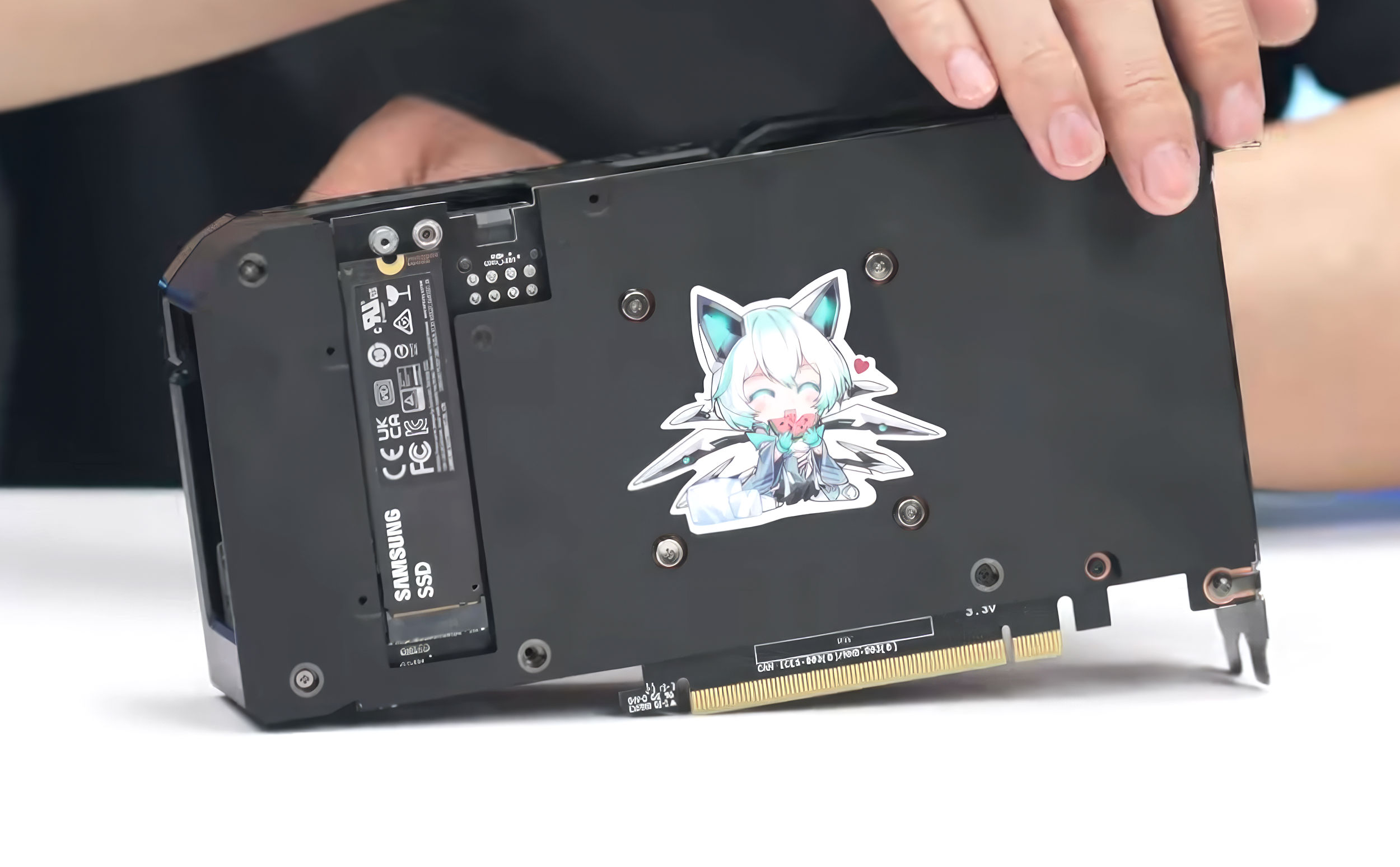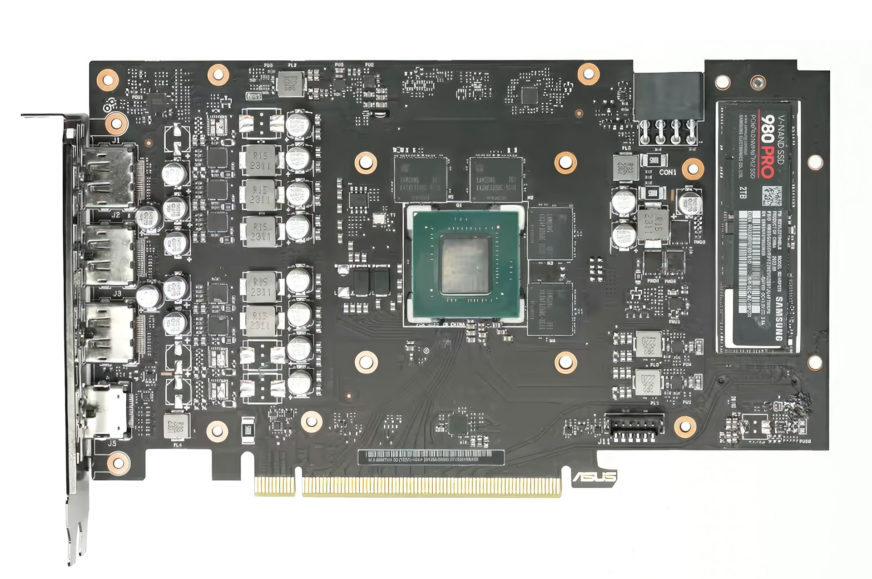Salvaging the half of the PCIe ×16 slot that goes to waste with eight-lane mainstream graphics cards
There’s more and more graphics cards that don’t use the full width of PCI Express ×16 slot and run with just eight lanes to cut GPU die area and cost. This usually renders the remaining eight lanes useless, but Asus has now come up with an idea to make them useful. They still won’t be usable for the graphics card itself, but at least they’ll find some use. It could come in handy on A620 boards with a shortage of M.2 slots, for example.
You probably know that the Radeon RX 7600 (and before them the 6600, 6600 XT, 6550 XT) cards only use eight PCI Express 4.0 lanes and the same is true with the GeForce RTX 4060 and 4060 Ti. These cards only utilise PCIe 4.0 ×8, although they usually keep contacts for all 16 lanes on the connector – more or less for aesthetic reasons. However, Asus has now come up with an idea how to reuse the extra lanes, which are sitting idle in the motherboard’s slot.
The company showed a concept or a prototype of a GeForce RTX 4060 Ti graphics using the twin-fan Dual design, that routes four of the unused eight lanes through the graphics card connector and brings them out as an M.2 slot with PCIe 4.0×4 connectivity. The slot is located directly on the graphics card PCB. It’s placed rather handily on its top side (when the card is mounted) .

The M.2 slot is used as normal to install an SSD, which can be done by the user. It should also be easily accessible in this position, as it will usually end up outside the CPU cooler area (if it came to worst, you could just pull the card out of the PC to install it). The graphics card PCB is cut out below the SSD module in the M.2 slot area and the SSD is directly exposed to the airflow from the graphics card fan, even though only the bottom side faces the airflow. This could perhaps protect the SSD from overheating that could otherwise result from the graphics card PCB getting hot around the GPU and power circuits under load.

The prototype of this graphics card was shown by Tony Yu from Asus in a video. The card was equipped with a Samsung SSD 980 Pro module, which ran at practically full performance (6.8 GB/s instead of 6.9 GB/s, which may be a random measurement error). It’s not entirely clear whether there’s any active components on the PCB that splits or switches the PCIe ×16 slot lanes, or whether Asus is relying on PCIe bifurcation, which must be directly supported by the CPU and motherboard.
It is hard to say whether this solution will appear on store shelves, because the shown card is probably not yet mass-produced and it is not known whether Asus will really be selling it, or it is just one of that sort of concepts that hardware manufacturers sometimes come up with only to never implement them in a real product. Such cards would theoretically be useful on cheaper boards that have few M.2 slots (or even just one) such as Mini-ITX boards or AMD A620 platform models, which sometimes suffer from this. But it is likely that this extra feature will raise the price of the card a bit too, which could in turn eliminate the attractiveness of the feature in practice.
Sources: VideoCardz, Asus (Bilibili)
English translation and edit by Jozef Dudáš
⠀
- Contents
- Salvaging the half of the PCIe ×16 slot that goes to waste with eight-lane mainstream graphics cards











